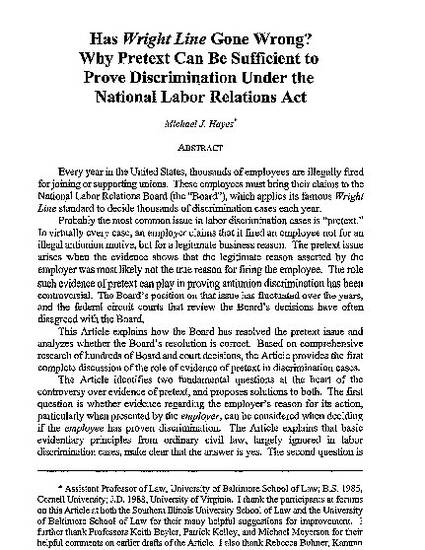
Every year in the United States, thousands of employees are illegally fired for joining or supporting unions. These employees must bring their claims to the National Labor Relations Board (the “Board”), which applies its famous Wright Line standard to decide thousands of discrimination cases each year. Probably the most common issue in labor discrimination cases is “pretext.” In virtually every case, an employer claims that it fired an employee not for an illegal antiunion motive, but for a legitimate business reason. The pretext issue arises when the evidence shows that the legitimate reason asserted by the employer was most likely not the true reason for firing the employee. The role of such evidence of pretext can play in proving antiunion discrimination has been controversial. The Board’s position on the issue has fluctuated over the years, and the federal circuit courts that review the Board’s decisions have often disagreed with the Board. This Article explains how the Board has resolved the pretext issue and analyzes whether the Board’s resolution is correct. Based on comprehensive research of hundreds of Board and court decisions, the Article provides the first complete discussion of the role of evidence of pretext in discrimination cases. The Article identifies two fundamental questions at the heart of the controversy over evidence of pretext, and proposes solutions to both. The first question is whether evidence regarding the employer’s reason for its action, particularly when presented by the employer, can be considered when deciding if the employee has proven discrimination. The Article explains that basic evidentiary principles from ordinary civil law, largely ignored in labor discrimination cases, make clear that the answer is yes. The second question is whether evidence of pretext can be the primary basis for finding discriminatory motivation. Here, the Article criticizes the Board and the courts for treating all types of evidence of pretext as equal, and explains which types of evidence of pretext provide a reasonable basis for finding discrimination.
Available at: http://works.bepress.com/michael-j-hayes/10/
